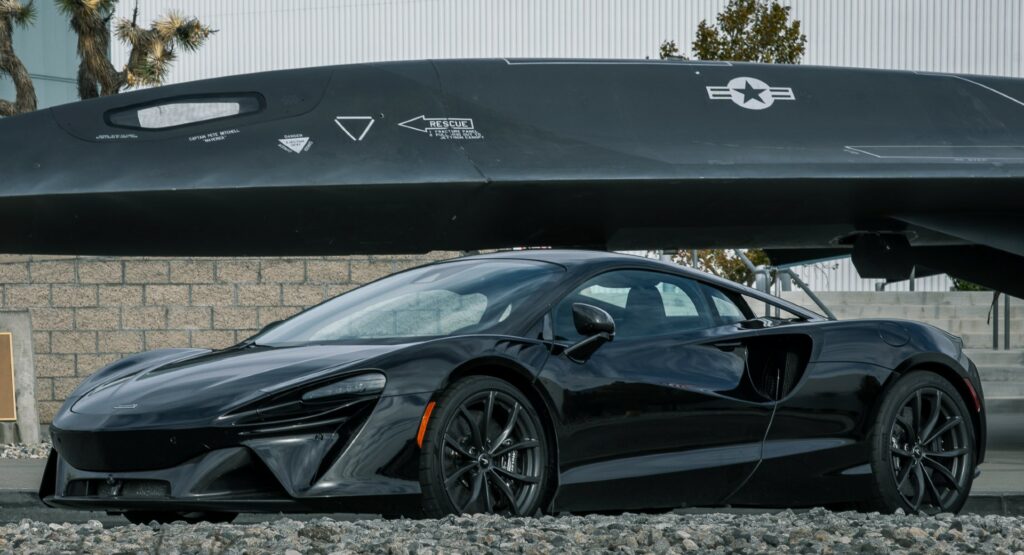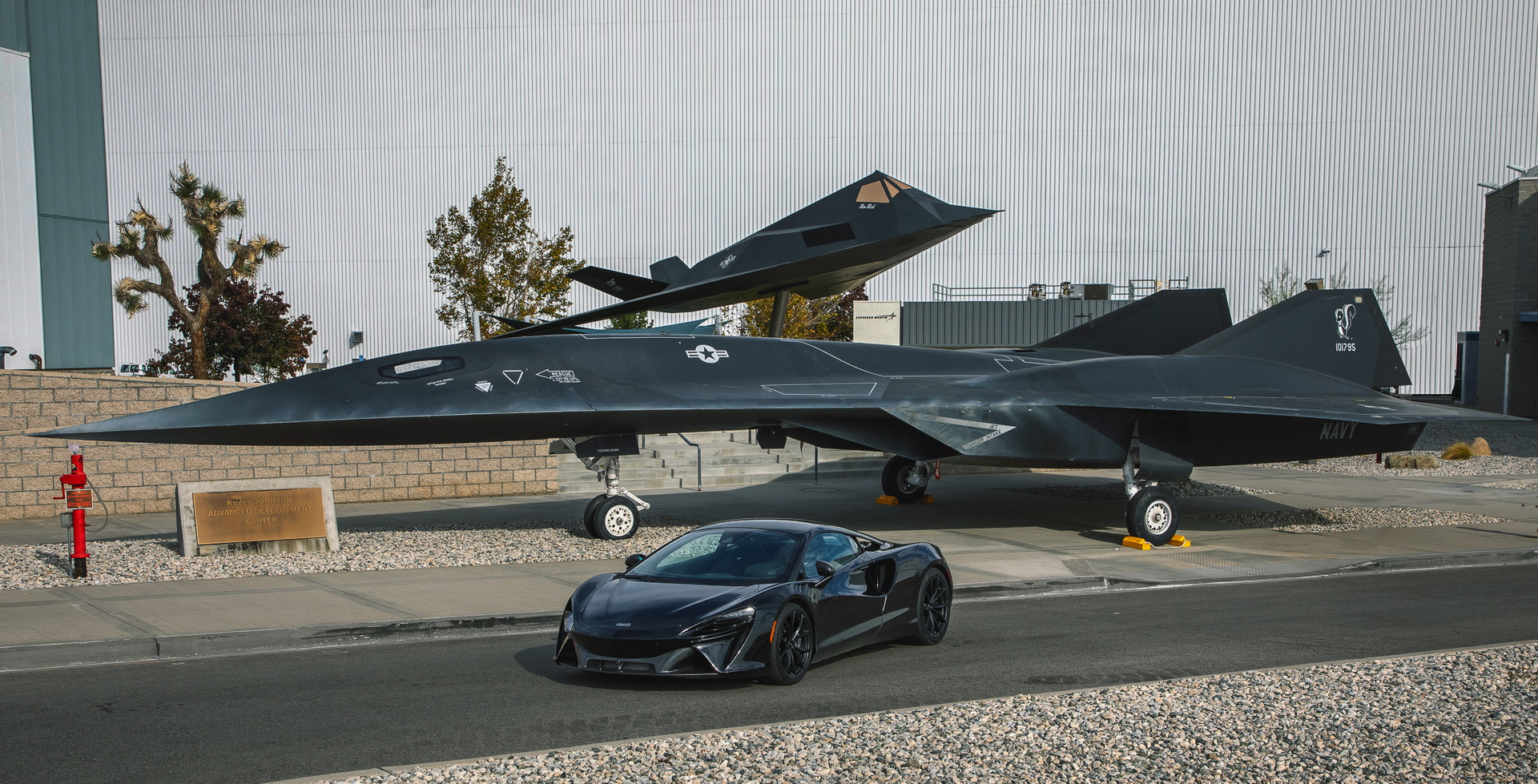Hypercars and supercars are often inspired by the world of aviation but McLaren Automotive took this a step further by announcing a technical collaboration with Lockheed Martin Skunk Works. The goal of the partnership is for McLaren to utilize Skunk Works’ futuristic design methodology in the development of new models.
According to McLaren, the “pioneering software sets the parameters for high-speed systems more accurately and swiftly than traditional design methods”. While this sounds a bit vague, engineers and scientists from the British automaker and the American aerospace company will test how this technology could be “employed commercially in the automotive design world”.
Read: Bugatti Chiron Sport And Rafale Fighter Jet Meet In Asphalt-Vibrating Race
A collaboration like this sounds promising but don’t expect the successor of the McLaren P1 to look anything like the Skunk Works’ Darkstar hypersonic aircraft which made an appearance earlier this year in the “Top Gun: Maverick” blockbuster film. Chances are that the benefits of the application of this new technology – if any – won’t be evident in the finished product which in this case is the next generation of McLaren supercars.
To celebrate the start of their collaboration, McLaren brought a black-painted Artura to the Skunk Works headquarters in California High Desert, in order to pose next to a prototype of the Darkstar. Darren Goddard, Chief Technical Officer, at McLaren Automotive said: “We hope this is the start of a longer and deeper collaboration that will benefit our customers in the long term”.
The Skunk Works special projects department of Lockheed Martin is responsible for some of the most iconic aircraft types including the SR-71 Blackbird (1966), the F-117 Nighthawk (1983), and the F-35 Lightning II (2006) which is the current weapon of choice for the air forces of numerous countries around the world.







